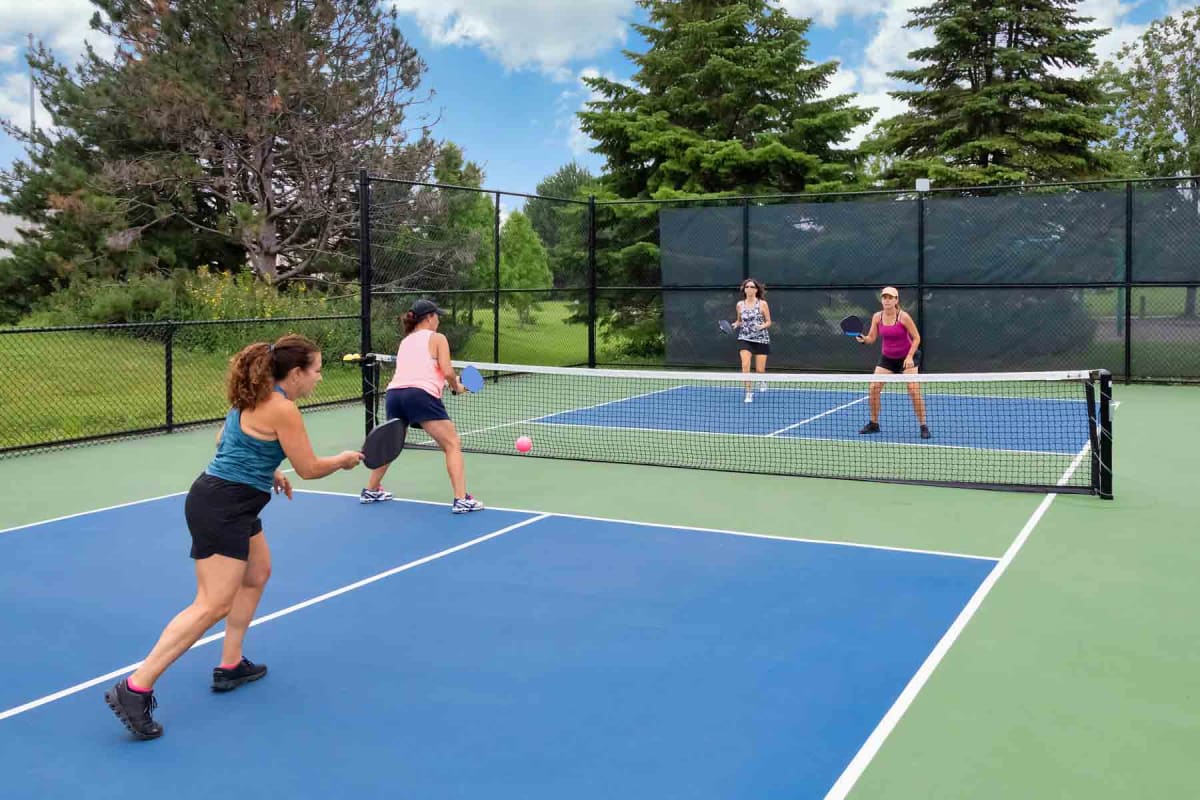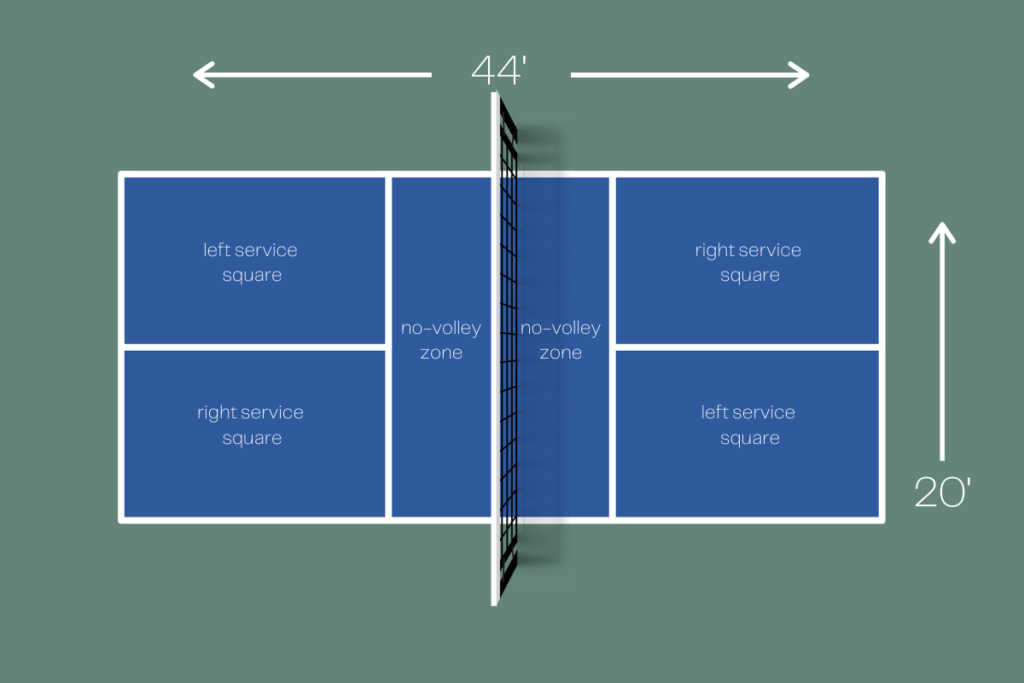High-grade Pickleball Court Construction for Every Level of Play
High-grade Pickleball Court Construction for Every Level of Play
Blog Article
Sustainable Practices in Pickleball Court Construction You Need To Know
As the popularity of pickleball proceeds to rise, so too does the need for lasting practices in court construction. This method not just addresses environmental problems but also boosts the long life and performance of the courts. From choosing environmentally friendly products to carrying out efficient water drainage and energy-saving illumination remedies, there are various strategies to take into consideration. Yet, the effect of these techniques prolongs much beyond the court itself. Comprehending just how each element adds to a much more sustainable future invites better exploration into the complex equilibrium between entertainment development and environmental stewardship.
Picking Eco-Friendly Materials
Choosing environment-friendly materials is an essential step in the construction of sustainable pickleball courts. The selection of sustainable products not just minimizes ecological influence but likewise boosts the longevity and efficiency of the court. Trick products include recycled rubber for the surface, which offers excellent sturdiness and shock absorption while drawing away waste from garbage dumps.
Furthermore, using locally sourced products minimizes transportation emissions and supports local economies. Pickleball court construction. As an example, making use of native hardwoods for secure fencing and seats can give a lasting visual while guaranteeing strength against the elements.
Integrating absorptive materials for court foundations can better add to sustainability by permitting all-natural water drainage and reducing overflow. These choices not just protect local ecosystems yet also promote healthier play atmospheres.
Effective Drainage Solutions
While the option of environmentally friendly materials is vital, implementing effective water drainage options is just as important for preserving sustainable pickleball courts. Proper water drainage not just shields the court surface area from water damage yet likewise reduces disintegration and overflow, advertising ecological stability.
Effective drain systems can consist of permeable paving, which allows water to penetrate the ground instead than merging on the surface area. This reduces the likelihood of standing water, which can cause mold and mildew and other upkeep issues. In addition, incorporating purposefully placed water drainage networks and swales can guide excess water far from the court area, making certain a completely dry having fun surface and avoiding dirt erosion.
Using indigenous plants in the landscaping around the courts can even more boost water drainage by soaking up excess water and lowering overflow. These plants call for less watering and promote biodiversity, lining up with lasting methods.
Furthermore, it is important to frequently maintain the drain system to guarantee its long-lasting performance. This includes clearing up debris and surveillance for obstructions. By focusing on effective water drainage options, pickleball court contractors can significantly add to the sustainability and longevity of the facility, inevitably benefiting both players and the setting.
Energy-Efficient Lighting Options
As the demand for pickleball continues to expand, incorporating energy-efficient lighting choices into court layout has actually come to be increasingly important for sustainability. Traditional illumination systems commonly eat too much power, adding to higher operational costs and environmental influence. Therefore, adopting modern, energy-efficient technologies is important for both new buildings and improvements.
LED (Light Emitting Diode) illumination sticks out as a leading option due to its long life and power financial savings (Pickleball court construction). Contrasted to traditional illumination, LEDs use about 75% much less energy and can last approximately 25 times longer, significantly lowering upkeep prices. The directional nature of LED illumination minimizes light contamination, ensuring that lighting is concentrated on the court rather than bordering areas.

Sustainable Surface Alternatives
Checking out lasting surface choices for pickleball courts has acquired traction amongst gamers and contractors alike. The emphasis on green products not just straightens with the growing environmental recognition yet additionally enhances the efficiency and durability of the courts.
This product offers outstanding shock absorption, minimizing the threat of injuries for gamers while advertising sustainability. These tiles are easy to change and set up, and their convenience permits for various court setups.
Natural yard courts are additionally arising as a sustainable selection, see this page promoting biodiversity and minimizing the warmth island effect. However, they need regular upkeep and water, which might not align with all sustainability goals.

Water Preservation Strategies

Another reliable technique includes the installment of rain harvesting systems. These systems find more info keep and gather rain for usage in maintaining court surfaces and landscape design. This approach not just saves potable water but also minimizes dependence on local sources.
Additionally, utilizing drought-resistant landscaping around the courts is necessary. Indigenous plants require much less water and are much better adapted to neighborhood climate conditions, therefore decreasing total water usage. Furthermore, making use of reliable watering systems, such as drip watering, makes certain that water is supplied directly to plant roots, reducing evaporation and waste.
Conclusion
Integrating sustainable practices in pickleball court building substantially contributes to environmental conservation and source performance. By focusing on these techniques, the building of pickleball courts can align with broader environmental objectives while promoting durability and functionality within neighborhoods.
As the popularity of pickleball proceeds to climb, so also does the demand for lasting methods in court building.Choosing eco-friendly products is a crucial step in the construction of sustainable pickleball courts. By prioritizing energy-efficient lights alternatives, pickleball court contractors can contribute to a much more lasting future while meeting the requirements of stakeholders and players alike.Integrating sustainable surface choices not just improves the efficiency of pickleball courts yet likewise paves the means for implementing reliable water conservation methods.Incorporating sustainable practices in pickleball court construction considerably adds to ecological conservation and source effectiveness.
Report this page